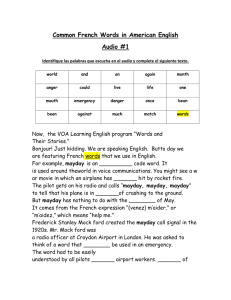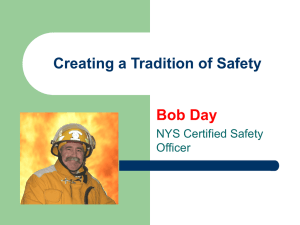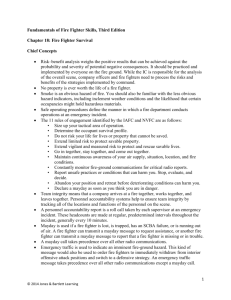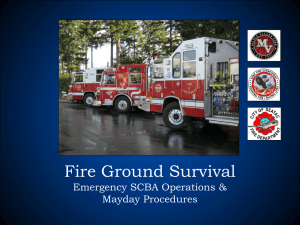Mayday & Emergency Evacuation Procedures: Firefighter Guideline
advertisement
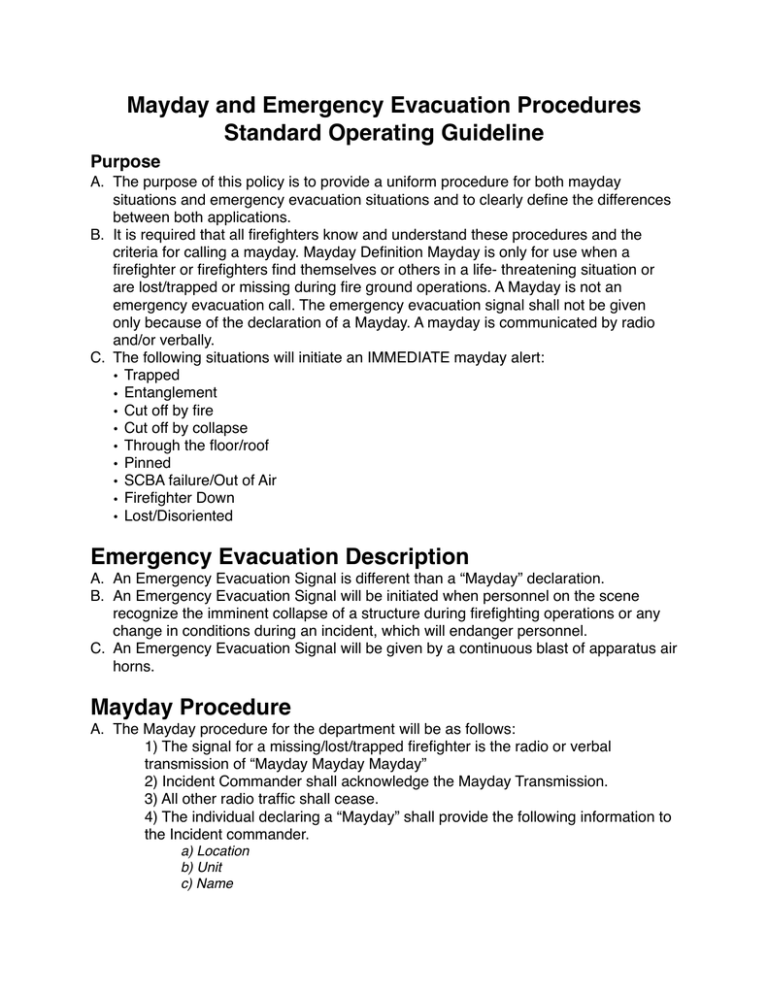
Mayday and Emergency Evacuation Procedures Standard Operating Guideline Purpose A. The purpose of this policy is to provide a uniform procedure for both mayday situations and emergency evacuation situations and to clearly define the differences between both applications. B. It is required that all firefighters know and understand these procedures and the criteria for calling a mayday. Mayday Definition Mayday is only for use when a firefighter or firefighters find themselves or others in a life- threatening situation or are lost/trapped or missing during fire ground operations. A Mayday is not an emergency evacuation call. The emergency evacuation signal shall not be given only because of the declaration of a Mayday. A mayday is communicated by radio and/or verbally. C. The following situations will initiate an IMMEDIATE mayday alert: • Trapped • Entanglement • Cut off by fire • Cut off by collapse • Through the floor/roof • Pinned • SCBA failure/Out of Air • Firefighter Down • Lost/Disoriented Emergency Evacuation Description A. An Emergency Evacuation Signal is different than a “Mayday” declaration. B. An Emergency Evacuation Signal will be initiated when personnel on the scene recognize the imminent collapse of a structure during firefighting operations or any change in conditions during an incident, which will endanger personnel. C. An Emergency Evacuation Signal will be given by a continuous blast of apparatus air horns. Mayday Procedure A. The Mayday procedure for the department will be as follows: 1) The signal for a missing/lost/trapped firefighter is the radio or verbal transmission of “Mayday Mayday Mayday” 2) Incident Commander shall acknowledge the Mayday Transmission. 3) All other radio traffic shall cease. 4) The individual declaring a “Mayday” shall provide the following information to the Incident commander. a) Location b) Unit c) Name d) Assignment e) Resources needed. EXAMPLE: Second Floor B side, 8 Engine 9, Firefighter Craig, Primary Search, the ceiling has collapsed on top of me and I need assistance. After the transmission of this information the firefighter shall activate the personal distress device. Do not activate the personal distress device until you have communicated the above information, this will allow your transmission to be as clear as possible. 5) Personnel who become trapped or disoriented should execute all necessary self-rescue activities to assist in their own rescue. 6) Upon receipt of the “Mayday” the incident commander shall immediately consult the Rapid Intervention Team leader and assign the rescue to that team if one is already assigned. In the event a Rapid Intervention Team is not assigned. Interior firefighters not engaged in other critical assignments on the scene will be utilized for the rescue effort. 7) All fire suppression activities shall continue unless ordered to cease by the Incident Commander. Fire suppression operations shall continue on another assigned tactical channel. 8) The assigned Incident Safety Officer shall perform a personnel accountability report of all units on the scene. This report shall be communicated to the Incident Commander. 9) All “Mayday” activities will continue as directed by the incident commander utilizing the Rapid Intervention Team 10) Only the individual who first signaled the emergency or the Rapid Intervention Team leader can cancel a “Mayday” after conformation of the rescue or recovery with the incident commander. Emergency Evacuation Procedure A. The Emergency Evacuation Procedure will be as follows: 1) All observations of building and/or incident conditions recognized as an impending threat to personnel will be reported to the Incident Commander for immediate action. 2) Once the situation has been reported to the Incident Commander, Only the IC will give the order for apparatus air horns to sound the evacuation signal. This rule must be adhered to as to eliminate any confusion during an emergency evacuation. 3) Apparatus air horns will sound continuously and the incident commander shall transmit “Evacuate” over the radio. All firefighting and/or rescue activities will cease and emergency accountability of personnel will begin immediately at the designated staging area. 4) Once the situation has been assessed and ultimately rectified only the Incident Commander can order fire ground operations to continue as conditions permit.
